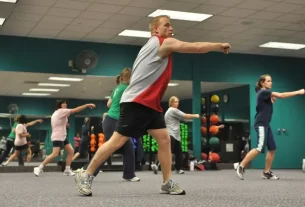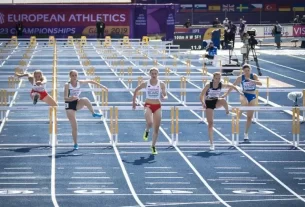The relationship between high blood pressure and physical exercise can be beneficial, but certain risks must be considered. Multiple studies have shown that regular physical activity can be beneficial for the prevention and treatment of hypertension, as well as for reducing cardiovascular risk and mortality.
Benefits of Physical Exercise on Blood Pressure
Several epidemiological studies have shown that physical training can reduce blood pressure. People who engage in moderate physical activity have a lower risk of developing high blood pressure. Hypertensive patients who exercise regularly have lower blood pressure levels. Some do not even require antihypertensive medication.
Physical training attenuates the rise in blood pressure with age and prevents the development of hypertension. Some studies have shown that regular physical exercise in young adults is associated with a lower risk of developing hypertension. This is observed even many years later. Similarly, studies conducted in older people have shown that improved physical fitness slows the rate of blood pressure increase. It is also observed over time and delays the onset of hypertension.
The blood pressure-lowering effect of physical activity has been observed especially during dynamic aerobic exercise. However, it is also observed during dynamic resistance training and static isometric exercise. Average reductions in systolic blood pressure with aerobic exercise are approximately 2 to 4 mm Hg in people with normal blood pressure. However, they are 5 to 8 mm Hg in adult patients with hypertension.
The blood pressure-lowering effect has been observed with both low- and high-intensity exercise. It can also be achieved with continuous and interval training, and can be achieved with dynamic and isometric exercises.
Regular physical activity of lower intensity and duration reduces blood pressure less than moderate- or high-intensity training. However, it reduces mortality by at least 15%. Resistance training reduces blood pressure more in hypertensive individuals.
Blood Pressure Response to Physical Exercise
During physical activity, there is a normal acute increase in blood pressure, especially systolic pressure. After resting, there is a short-term decrease below the initial value.
Blood circulation must be faster during physical exercise to ensure sufficient blood flow to the muscles under exercise. Therefore, it is logical that blood pressure should increase during exercise, especially systolic pressure.
There is no consensus on the normal blood pressure response during exercise. It has been considered that it can rise to 200 mm Hg without risk, although some authors consider a normal response up to 210 mm Hg.
The increase in blood pressure with physical exercise is greater the higher the resting blood pressure is before exercise. It is also greater with age, arterial stiffness, and abdominal obesity. Furthermore, it is somewhat higher in women than in men.
Some studies have observed that people who experience excessive increases in blood pressure during physical exercise are more likely to develop high blood pressure in the future.
It is known that blood pressure is higher in people who live at high altitudes, above 2,000 meters. When an individual ascends to these altitudes, a series of factors are activated, especially sympathetic stimulation, which raise blood pressure.
Likewise, when a person living at high altitude descends to sea level, their blood pressure decreases, which must be taken into account when administering pharmacological treatment, as many require dose reduction or discontinuation of medications.
Recommendations
— People with hypertension can and should exercise regularly. This is considered beneficial as part of lifestyle changes to lower blood pressure. Only in cases of severe high blood pressure should the beginning of physical activity be delayed until blood pressure is reduced.
— Aerobic or dynamic exercise is recommended for 90 to 150 minutes per week, with a load of 50% to 80% of the maximum heart rate. This can reduce blood pressure by up to 8 mm Hg. Isometric exercise in phases of four 2-minute exercises, with one minute of rest between each, at 30% to 40% of the maximum voluntary contraction, in 3 sessions per week, is also recommended. This can reduce blood pressure by up to 5 mm Hg.
— Hypertensive patients are recommended to perform at least 30 minutes of moderate-intensity dynamic aerobic exercise (walking, jogging, cycling, or swimming) 5 to 7 days per week.
— They can also perform resistance exercises 2 to 3 days per week.
— For additional benefit in healthy adults, a gradual increase in aerobic physical activity to 300 minutes per week of moderate intensity or 150 minutes per week of vigorous-intensity aerobic physical activity is recommended. An equivalent combination of these is also recommended.
— It is important to assess the altitude to which the individual is exposed. Patients with hypertension should have their blood pressure measured frequently when ascending to mountainous areas. If they have severe or poorly controlled hypertension, they should not be exposed to altitudes above 2,000 meters.
— Sports activities can be performed at high altitudes, even above 4,000 meters. In this case, patients with mild to moderate hypertension should be well controlled with treatment. Blood pressure should be checked for normal levels before physical exercise.
References:



